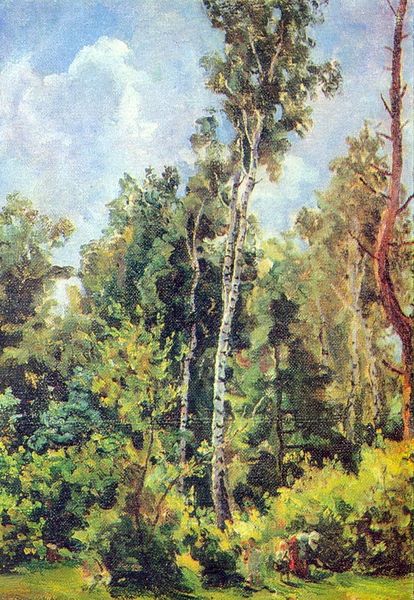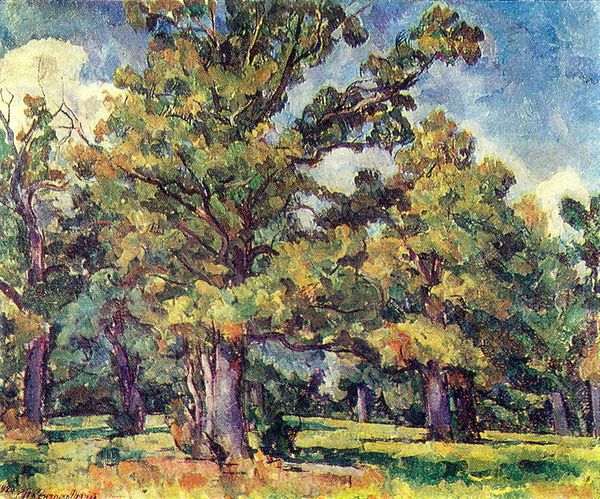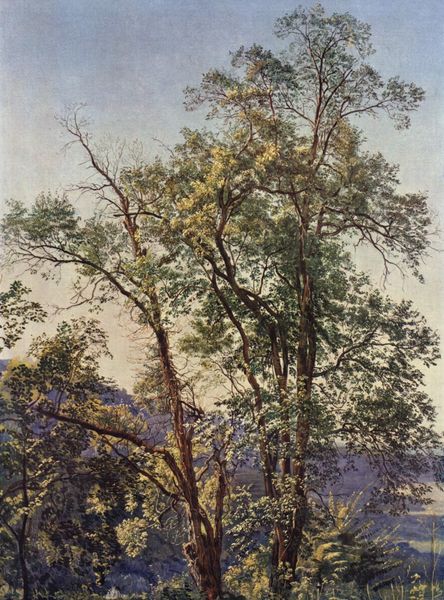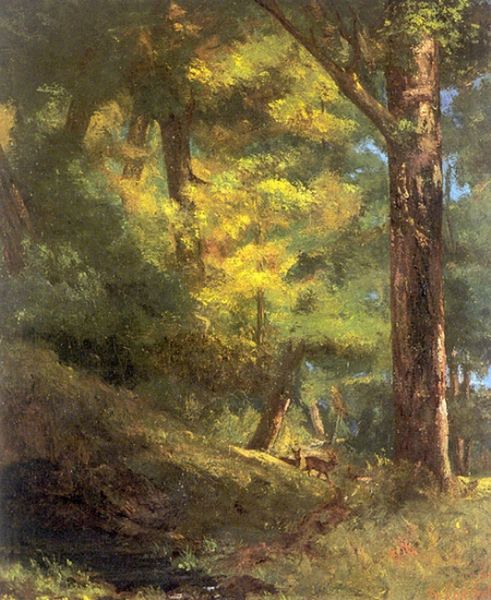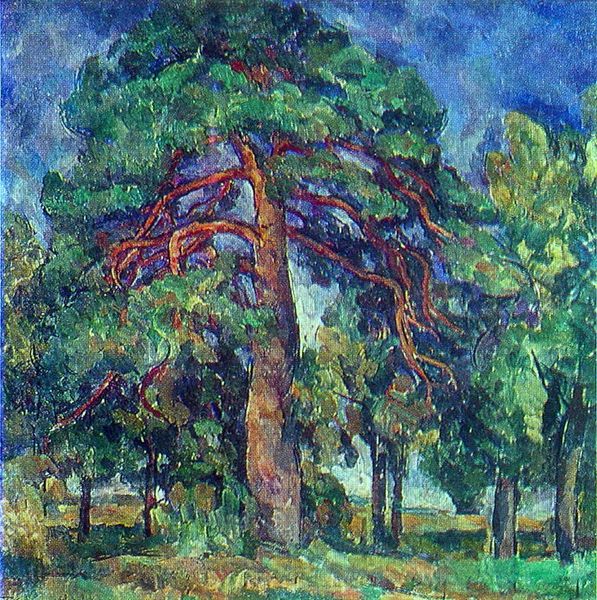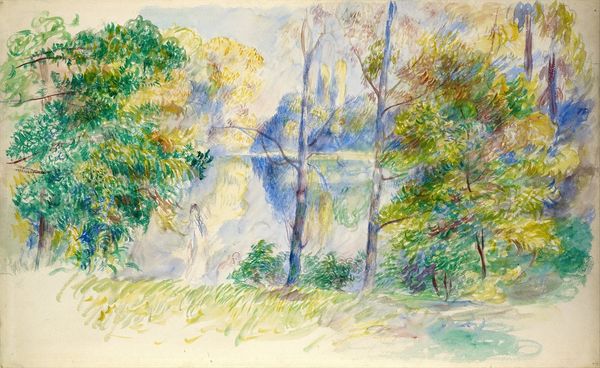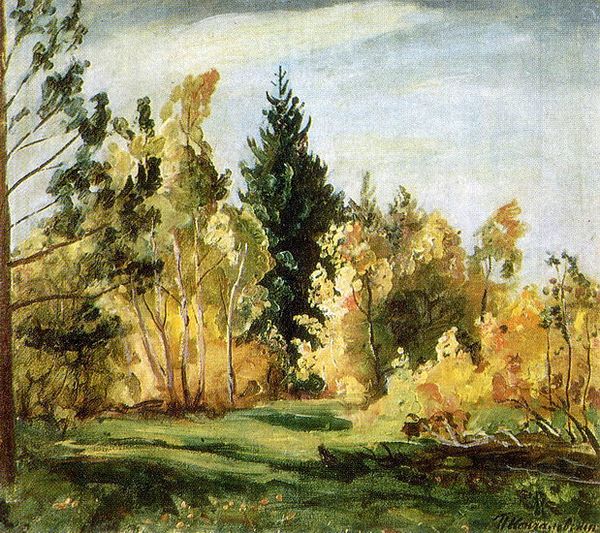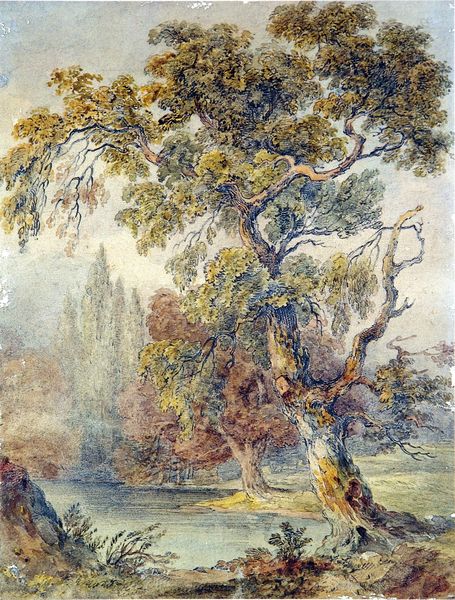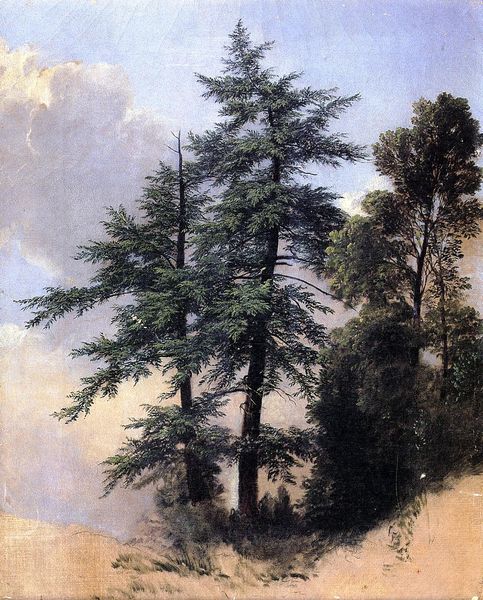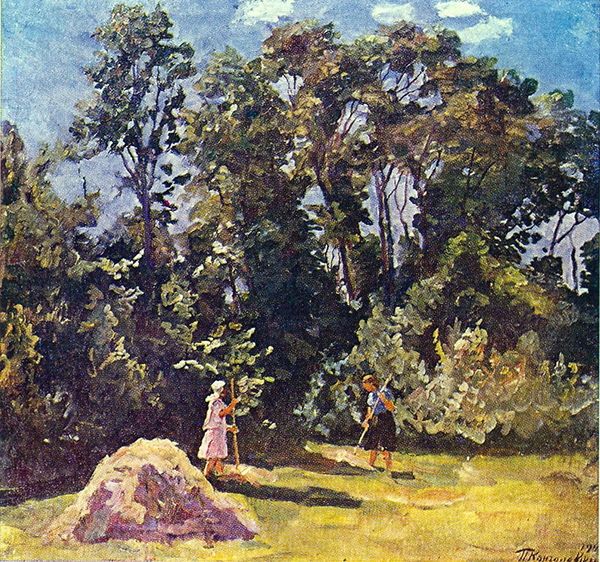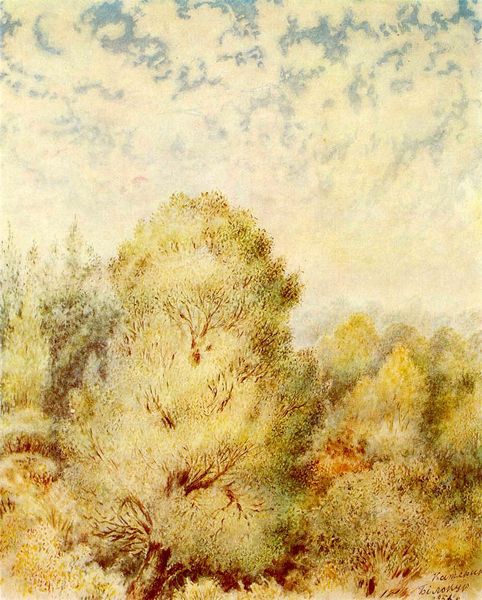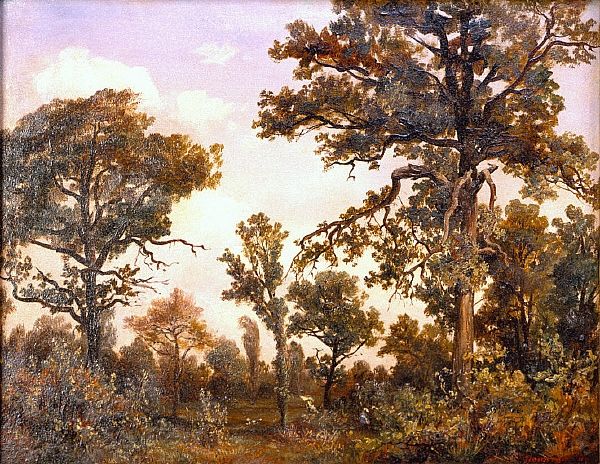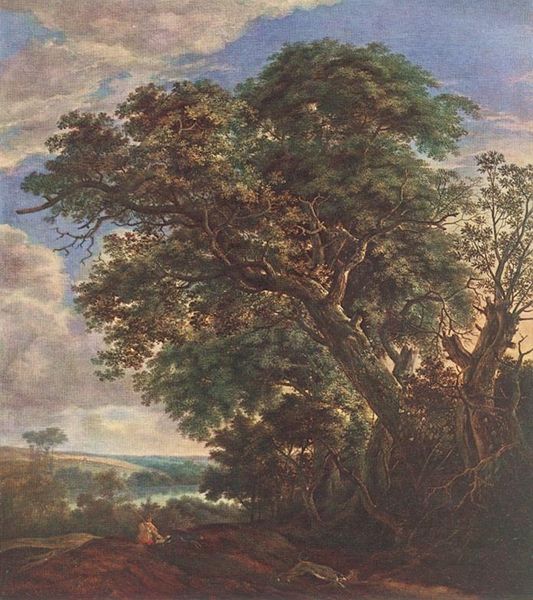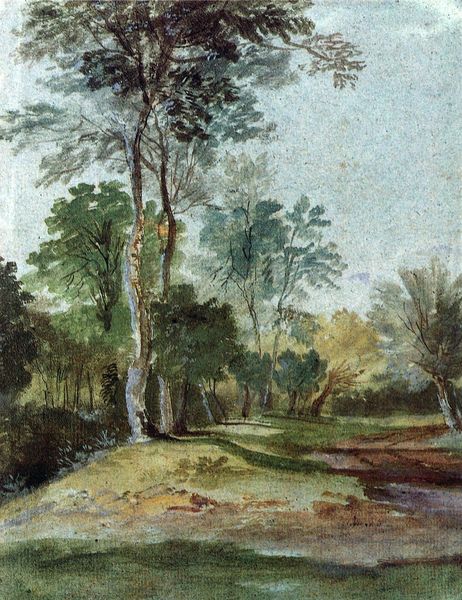
Dimensions: 76 x 68 cm
Copyright: Pyotr Konchalovsky,Fair Use
Curator: Look at the vibrant greens in Pyotr Konchalovsky’s oil painting "Alder against the sun," created in 1932. It’s really quite luminous, isn’t it? Editor: Luminous indeed! The interplay of light and shadow feels almost tangible, drawing the eye in and around the thick layering of the paint. There’s a definite energy in how he’s captured this forest. Curator: It is interesting to see Konchalovsky embrace the tradition of landscape painting during a period of intense social and political upheaval in the Soviet Union. How did portraying natural beauty intersect with the socialist ideals of the time? Did it function as a kind of escape? Editor: That tension is fascinating. From a formal perspective, observe the strategic positioning of that lone cloud. Its soft, ethereal form provides such a visual contrast against the density of the foliage, guiding our perception. Curator: Right. One could suggest that these idyllic scenes indirectly legitimized the existing political structure by implying order and peace under its authority, which is an element within Stalinist realism. Editor: Perhaps. But let's consider how Konchalovsky balances realism with an almost Impressionistic sensibility. It’s there in the broken brushstrokes that convey movement and light reflecting throughout the trees. The execution complicates any simple reading as pure propaganda. Curator: Of course, he was very well known within the Russian avant-garde scene and had a very singular, distinct artistic language to translate his surroundings through painting. It makes me wonder about the function of nostalgia here... for an idealized landscape or a former cultural environment that was lost during revolution? Editor: Maybe both? What I see is that it invites us to consider art's capacity to exist beyond overt messaging. It offers space to explore the sheer sensory joy derived from representing something beautiful and full of light. Curator: It seems that by focusing on the enduring quality of nature, Konchalovsky invites us, maybe even implores us, to remember, find peace, and connect with the beauty inherent in the everyday, something bigger than ideology. Editor: Well said. It gives us much to appreciate—the weight of art in socio-politics, yet also its lightness in being the simple rendering of an instant, and I hope we’ve brought some of both to our listeners.
Comments
No comments
Be the first to comment and join the conversation on the ultimate creative platform.
